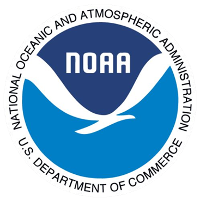
Oil Spill Assessment for Marine Mammals
NOAA Publishes New Guidelines Assessing Exposure and Impacts of Oil Spills on Marine Mammals
Map Below: Current oil spill case locations from NOAA's Damage Assessment Remediation and Restoration Program (NOAA).
Map Above: Current oil spill case locations from NOAA's Damage Assessment Remediation and Restoration Program (NOAA).
Since thousands of oil spills of varying sizes occur in U.S. waters each year, oil spill scientists must be prepared to respond to and assess the impacts of oil on marine mammals.
To do this, the National Oceanic and Atmospheric Administration (NOAA) has published:
"Guidelines for Assessing Exposure and Impacts of Oil Spills on Marine Mammals"
These guidelines provide a review of considerations for marine mammals under NOAA's jurisdiction, incorporating knowledge gained from previous oil spills, especially the 2010 Deepwater Horizon spill.
This story map is an overview of some of the information, tools, and figures found in the report.
Marine Mammal Vulnerability to Oil
Petroleum products are complex and contain many compounds that can harm marine mammals and can cause death, cancers, and organ damage. Some oil compounds can linger in the water for a long time and accumulate in the bodies of living things.
Dolphins swimming through oiled water during the Deepwater Horizon oil spill (NOAA).
Marine Mammals Can Be Exposed to Oil In Several Ways
Dolphin with oiled skin during the Deepwater Horizon oil spill (NOAA).
Their bodies can be oiled by swimming through oiled water.
Oil can be inhaled and aspirated as they breathe at the surface.
Oil can be ingested by preening fur seals as they clean themselves.
Oil can be ingested by consuming oiled water or prey.
Mammals break down oil in their bodies quickly, so it can be difficult to determine oil exposure through chemical analysis if much time has passed.
Methods for Assessing Injury to Marine Mammals from Oil Spills
No two oil spills are the same, so it is important for oil spill responders and marine mammal experts to be familiar with methods for assessing injury to marine mammals before disaster strikes.
The methods described in the Slideshow below represent the best starting points when planning a marine mammal oil spill assessment, although there may be other approaches appropriate for specific regions, species, and scenarios.
All field methods that involve approaching, handling, or sampling marine mammals (live or dead) require permits under the Marine Mammal Protection Act and Endangered Species Act.
Gray seal tagging for a research project in Massachusetts (NOAA).
Using Sound Science to Hold Polluters Accountable
America's marine resources are public resources, they belong to us all.
The assessment methods outlined above are best practices to collect quality data after oil spills, hazardous waste spills and ship groundings, allowing NOAA and our partners to hold responsible parties accountable for injuries to marine mammals and fund restoration on behalf of all Americans.
NOAA Damage Assessment Remediation and Restoration Program oil spill, hazardous waste, and ship grounding site locations (NOAA).
Guidelines for Assessing Exposure and Impacts of Oil Spills on Marine Mammals
- Included in this publication are tools and information about marine mammals to help prepare for future disasters. Although the needs of each oil spill are unique, these guidelines serve as a planning tool to use sound science to prepare for future spills.
Experts at NOAA continue to work diligently with our partners, so when oil spill disasters strike we will be even better prepared to respond on behalf of marine mammals.
Mother sea lion and pup (NOAA).